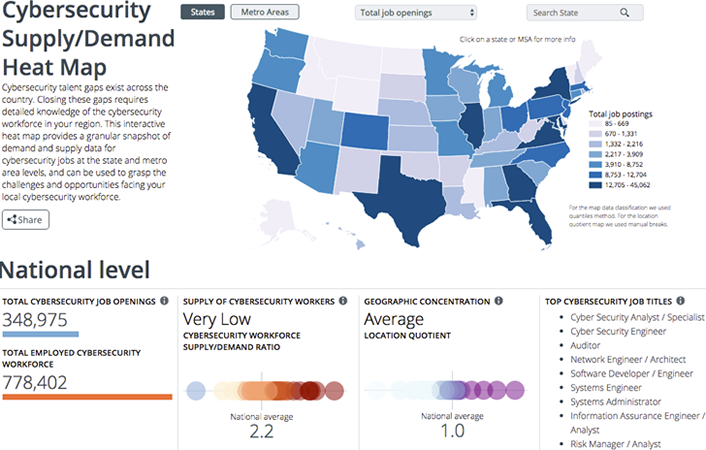As our technology continues to improve and grow, so do the number of jobs dealing with the cyberworld. In addition to this growth is the increase in cyberthreats that have the potential to wreak havoc on critical infrastructure and other organizations. But the astounding number of available cybersecurity jobs that go unfilled is expected to continue to increase. 1 Not only is the number of abundant jobs appealing to those looking for a lifetime career — the potential salary is a great selling point. Some top-tier salaries for cybersecurity jobs in the United States can range from $132,000 to $380,000.2 Who wouldn't want a job in a field where there's always demand and you make a six-figure salary?3

Although a high salary and job security are great benefits, they're not enough: the field isn't attracting the number of job applicants that most other career paths do. The lack of ready and skilled workers is still a hindrance for the cybersecurity community and will eventually lead to companies not being able to perform their daily duties. So how do we fix this issue? There are many ideas floating around about the reasoning behind this massive gap. The cybersecurity field is always evolving as technology continues to advance, and so too must the skills of the professionals. Therefore, many organizations must constantly update and implement training for employees or even hire more people who may be skilled in this technology on a rolling basis. This puts a strain on organizations by forcing them to devote more of their budget to training or personnel. Others hint at the lack of higher education having the resources available to teach and prepare those pursuing a career in cybersecurity.
But higher education isn't entirely to blame for this disproportionate gap. If we want to fill these positions, we need to start earlier — with the youngest generation. In accordance with their education about online safety, we need to incorporate a way for them to learn about the myriad topics of the computing world and how this knowledge is still applicable for them beyond the repetitive "say no to strangers online" spiel. By changing the curriculum of the K–12 computer education to include more information on cybersecurity, we not only introduce kids to the field at a young age but also open up the possibility that some of them will be interested in pursuing a cybersecurity career.
By incorporating more hands-on and fun activities for the younger audiences, we allow them to learn about and develop an introductory knowledge of cybersecurity. For middle school children, we can still do fun activities but we can also incorporate social media and how cybersecurity goes hand-in-hand with this experience. This not only targets the age group but also gives them a way to connect more personally with the material. For high school students, we can give them more real-world examples and hands-on experience, and even talk about the potential for jobs in the cybersecurity field. In all of the age groups, they will continue to receive a comprehensive curriculum and will maybe even pass on the information to their family, which then adds to the reach of the class's audience. By educating and equipping the up-and-coming workforce with the resources needed to fulfill these jobs, we then reduce the gap and increase the brainpower behind the research of our security online.4
By introducing children to cybersecurity, we will not only raise a generation of Americans with a great general education but also add the potential to lead globally when it comes to online safety. By instilling children with the knowledge and resources needed for all of those unfulfilled cybersecurity jobs, everyone reaps the benefits of a strong cybersecurity workforce with dedicated individuals who are passionate about their work. If we truly believe that the children are our nation's future, then we must invest in them — and their cybersecurity education — early.
Notes
- Explore more interactive maps showing cybersecurity supply and demand.
- Business 2 Community shares three reasons for the growing popularity of cybersecurity jobs, which include demand outweighing supply, highly competitive salaries, and more opportunities for cybersecurity degrees in higher education.
- View a list compiled by Forbes showing some of the highest average CISO salaries.
- There are a few notable cybersecurity programs available for those in middle or high school that offer insight into the cybersecurity world in a way that both educates children and helps raise awareness to the public. Learn more about the CyberPatriot and U.S. Cyber Challenge programs.
Michaela A. Webster is an undergraduate student at the University of Pittsburgh.
© 2017 Michaela A. Webster. This EDUCAUSE Review blog is licensed under Creative Commons BY-NC-SA 4.0.
